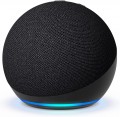—
RCA. The RCA interface uses coaxial cables, with characteristic "tulip" plugs, and the corresponding connectors. It can be used to transfer different types of data, however, in this case, it means outputting an audio signal in analogue format, one channel of audio per connector. RCA is widely used in modern audio technology, but its resistance to interference is very limited.
— Mini-Jack (3.5 mm). One of the standard connectors in modern audio equipment, it is widely used in portable devices, as well as for connecting headphones. However, we note that in this case we mean the jack responsible for the line output — an interface for transmitting an audio signal in analogue format to an external device, such as an amplifier. The headphone jack is listed separately in our catalog, even if it belongs to the 3.5 mm mini-Jack standard; See below for details on headphone output.
—
Coaxial S / P-DIF. An electrical version of the S / P-DIF standard, using a coaxial cable with a “tulip” connector for signal transmission. Do not confuse this interface with the analogue RCA described above — despite the identity of the connectors, these standards are fundamentally different: "coaxial" works in digital format and even multi-channel audio can be transmitted over a single cable. Compared to
optical S/P-DIF, this interface is less resistant to interference, but more rel
...iable because electrical cables are not as delicate.
— Optical. One of the varieties of the S / P-DIF standard is, along with the coaxial one described above. In this case, the signal is transmitted via a TOSLINK fiber optic cable. The main advantage of this interface is its complete insensitivity to electrical interference, while its capabilities are sufficient even to work with multi-channel audio. Among the shortcomings, it is worth noting the high price of connecting cables, as well as the need for careful handling of them.
— Subwoofer. A separate output for connecting an external subwoofer — a specialized low-frequency speaker. The use of such a speaker allows you to significantly improve the sound of low frequencies, make the bass powerful and rich, which general-purpose speakers are not capable of. Note that such an output can also be useful in systems with a built-in subwoofer — external "subwoofers" are in most cases more powerful and provide more options for adjusting the sound.
— Headphones. Separate headphone output. Most often, a standard 3.5 mm mini-Jack or 6.35 Jack is used for this purpose, but there may be other options — for example, a manufacturer's proprietary connector. Anyway, headphones can come in handy in situations where you need to keep quiet — for example, if you want to listen to music at a late time when others are already sleeping — or vice versa, in noisy environments when ambient sounds drown out the speakers of the audio system.
— Composite. The full-size composite interface includes three connectors — one for video transmission and two for left and right stereo channels. However, in this case, a composite output usually means only a video connector (the standard acoustics of the audio system are responsible for the sound, it usually makes no sense to broadcast it to a TV). Anyway, this output allows you to connect the audio system not only to the latest, but also to frankly outdated TVs. Its disadvantages are poor image quality and incompatibility with HD.
— Component. Output for transmitting video signal in analogue format. Outwardly similar to the composite interface described above, because also uses three RCA cables; however, in this case, these cables carry three components of the video signal (hence the name). The component interface is considered the most advanced among the popular analogue video standards, it provides the highest image quality among them and is even capable of working with HD resolutions. Among the shortcomings, it is worth noting the impossibility of transmitting sound — this will require a separate connection.
— S video. Analogue interface for video transmission. In some way similar to the component described above, since it also provides separate wires for transmitting video signal components; however, in this case there are only two of these wires. This, on the one hand, allowed us to limit ourselves to one connector instead of several, on the other hand, it slightly reduced the quality of the “picture” and limited the bandwidth, so HD is out of the question with such a connection.
— SCART. Universal audio/video interface using a characteristic large 21-pin connector (20 pins plus a rim around the connector). For a long time it was the standard for European video equipment, but today it is considered obsolete due to its low bandwidth and significant dimensions. Note that SCART can work with signals of different formats, which allows the use of adapters — in particular, for connecting external devices via composite and component interfaces.
— HDMI. Universal digital interface that allows you to transfer HD-video and multi-channel audio over a single cable. It is practically a standard for modern video equipment, in particular, it is present in most TVs. In audio systems, this type of output is used in the same way as the coaxial S / P-DIF described above — that is, to output the audio signal in digital form.
